
Chester William Nimitz was a fleet admiral in the United States Navy. He played a major role in the naval history of World War II as Commander in Chief, US Pacific Fleet, and Commander in Chief, Pacific Ocean Areas, commanding Allied air, land, and sea forces during World War II.

Raymond Ames Spruance was a United States Navy admiral during World War II. He commanded U.S. naval forces during the Battle of the Philippine Sea, one of the most significant naval battles of the Pacific Theatre. He also commanded Task Force 16 at the Battle of Midway, comprising the carriers Enterprise and Hornet. At Midway, dive bombers from Enterprise sank four larger carriers of the Imperial Japanese Navy. Most historians consider Midway the turning point of the Pacific War.

Ernest Joseph King was a fleet admiral in the United States Navy who served as Commander in Chief, United States Fleet (COMINCH) and Chief of Naval Operations (CNO) during World War II. Franklin Delano Roosevelt appointed King to command global American strategy during World War II and he held supreme naval command in his unprecedented double capacity as COMINCH and CNO. He was the U.S. Navy's second-most senior officer in World War II after Fleet Admiral William D. Leahy, who served as Chief of Staff to the Commander in Chief. Chief of Staff to the Commander in Chief. King commanded the United States Navy's operations, planning, and administration and was a member of the Joint Chiefs of Staff and Combined Chiefs of Staff.
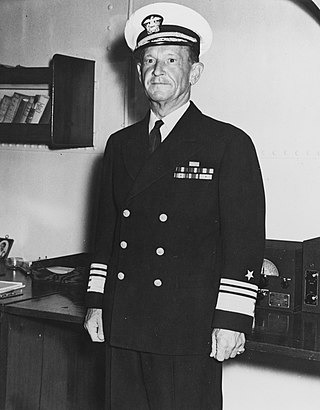
Frank Jack Fletcher was an admiral in the United States Navy during World War II. Fletcher commanded five different task forces through the war; he was the operational task force commander at the pivotal battles of the Coral Sea and Midway, which collectively resulted in the sinking of five Japanese aircraft carriers.

Admiral Richmond Kelly Turner, commonly known as Kelly Turner, was an admiral of the United States Navy during the Second World War, where he commanded the Amphibious Force in the Pacific theater. Turner was also responsible for the creation of the Underwater Demolition Teams (UDT) in 1942 that were an early precursor to the United States Navy SEALs.

Vice Admiral Robert Lee Ghormley was an admiral in the United States Navy who served as commander, South Pacific Area during World War II. Ghormley was long considered to be an ineffective leader–overly cautious, pessimistic, and even defeatist–but recent scholarship has argued that while he may not have been an inspiring leader, he performed well enough under difficult circumstances.
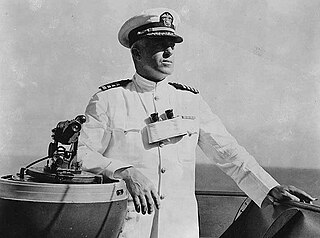
Daniel Judson Callaghan was a United States Navy officer who received the Medal of Honor posthumously for his actions during the Naval Battle of Guadalcanal. In a three-decades-long career, he served his country in two wars. Callaghan served on several ships during his first 20 years of service, including escort duties during World War I, and also filled some shore-based administrative roles. He later came to the attention of President Franklin D. Roosevelt, who appointed Callaghan as his naval aide in 1938. A few years later, he returned to command duties during the early stages of World War II. An enemy shell killed Callaghan on the bridge of his flagship, USS San Francisco, during a surface action against a larger Japanese force off Savo Island. He was the third of five US Navy admirals killed in battle during WWII, including: Isaac C. Kidd ; Norman Scott ; Henry M. Mullinnix ; and Theodore E. Chandler.

Thomas Cassin Kinkaid was an admiral in the United States Navy, known for his service during World War II. He built a reputation as a "fighting admiral" in the aircraft carrier battles of 1942 and commanded the Allied forces in the Aleutian Islands Campaign. He was Commander Allied Naval Forces and the Seventh Fleet under General of the Army Douglas MacArthur in the Southwest Pacific Area, where he conducted numerous amphibious operations, and commanded an Allied fleet during the Battle of Leyte Gulf, the largest naval battle of World War II and the last naval battle between battleships in history.
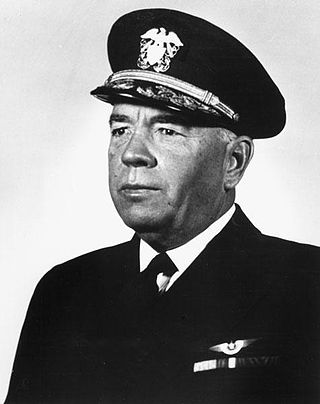
Admiral Jonas Howard Ingram was an officer in the United States Navy during World War I and World War II. He commanded the United States Atlantic Fleet during World War II and was a recipient of the Medal of Honor for his actions in 1914 in Veracruz, Mexico.

Robert Carlisle Giffen was an admiral in the United States Navy.

Walter Stratton Anderson was a Vice Admiral of the United States Navy, who served as the Executive officer of USS Arizona in World War I and as Commander Battleships, Battle Force in the Pacific Fleet, and of the Gulf Sea Frontier, during World War II.

Lynde Dupuy McCormick was a four-star admiral in the United States Navy who served as vice chief of naval operations from 1950 to 1951 and as commander in chief of the United States Atlantic Fleet from 1951 to 1954, and was the first supreme allied commander of all NATO forces in the Atlantic.

Herbert Fairfax Leary was a highly decorated officer in the United States Navy with the rank of vice admiral. A son of Rear Admiral Richard P. Leary, he distinguished himself during World War I while on the staff of commander, U.S. Naval Forces in Europe under Admiral William Sims and received the Navy Cross, the United States Navy's second-highest decoration awarded for valor in combat.

John Howard Hoover was a United States Navy admiral who held several flag commands during World War II most notably those in the Central Pacific under Chester W. Nimitz. Hoover became one of Nimitz's trusted if little known admirals of the Pacific war.
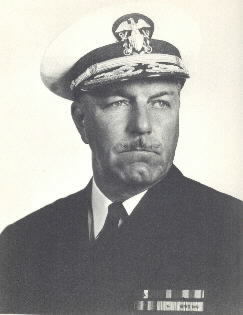
Mahlon Street Tisdale was an officer of the United States Navy. He was awarded two Navy Crosses, one for staff service in World War I, and another during the Battle of Tassafaronga in World War II.

Harold Cecil Train was a rear admiral in the United States Navy who served as the Director of the Office of Naval Intelligence between 1942 and 1943 and as commanding officer of the battleship USS Arizona. He was father of Admiral Harry D. Train II and grandfather of Rear Admiral Elizabeth L. Train.

Adolphus Andrews was a decorated officer in the United States Navy with the rank of Vice Admiral. A Naval Academy graduate and veteran of three wars, he is most noted for his service as Commander, Eastern Sea Frontier during the World War II.

John Henry Newton was a highly decorated officer in the United States Navy with the rank of vice admiral. He distinguished himself as commanding officer of destroyer USS Patterson during World War I and received the Navy Cross, the United States Navy second-highest decoration awarded for valor in combat.
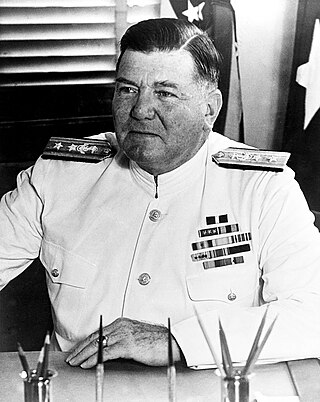
John Franklin Shafroth Jr. was a highly decorated officer in the United States Navy with the rank of Vice Admiral. He distinguished himself as Commander of destroyer USS Terry during World War I and received the Navy Cross, the United States Navy second-highest decoration awarded for valor in combat.



















